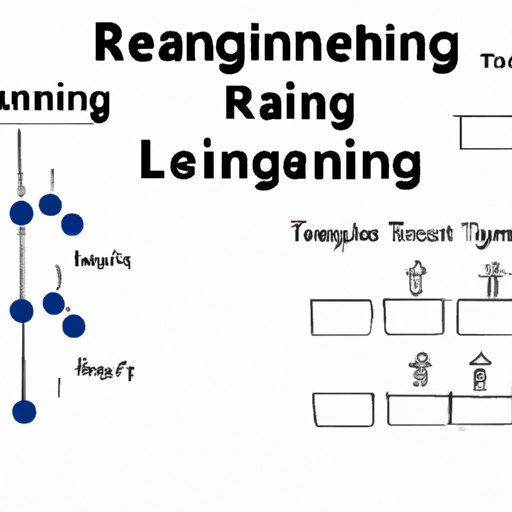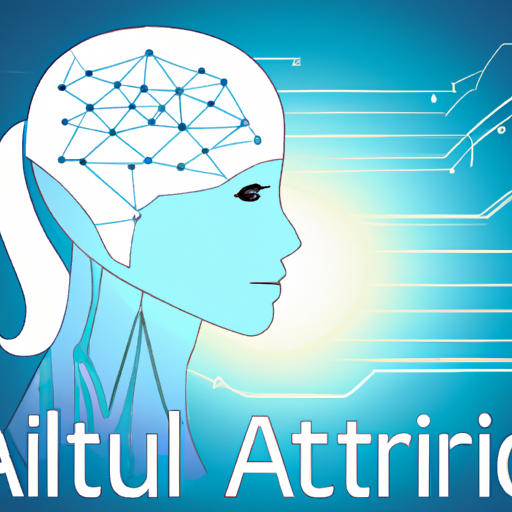-
Table of Contents
- Introduction
- Reinforcement Learning for Natural Language Processing
- Reinforcement Learning in the Real World: Applications and Challenges
- An Overview of Reinforcement Learning Algorithms
- How Reinforcement Learning is Revolutionizing Robotics
- Exploring the Benefits of Reinforcement Learning for Automation
- Conclusion
“Unlock the power of Reinforcement Learning to maximize your potential!”
Introduction
Reinforcement learning is a type of machine learning that enables agents to learn from their environment by taking actions and receiving rewards for those actions. It is an area of artificial intelligence that focuses on how software agents should take actions in an environment to maximize some notion of cumulative reward. Reinforcement learning algorithms are used in a wide variety of applications, including robotics, game playing, and finance. It has been used to solve complex problems such as controlling robots, playing games, and optimizing financial portfolios. Reinforcement learning is a powerful tool for solving complex problems and has been used to achieve impressive results in a variety of fields.
Reinforcement Learning for Natural Language Processing
Reinforcement Learning (RL) is an area of Machine Learning that has recently gained a lot of attention in the field of Natural Language Processing (NLP). RL is a type of learning that is based on trial and error, where an agent learns from its environment by taking actions and receiving rewards or punishments. This type of learning has been used to solve a variety of tasks in NLP, such as machine translation, text summarization, and dialogue systems.
RL has several advantages over other types of learning algorithms. For example, it can learn from sparse rewards, which is useful for tasks such as dialogue systems where rewards are often delayed. It can also learn from a large number of possible actions, which is useful for tasks such as machine translation where there are many possible translations for a given sentence. Finally, RL can learn from a continuous state space, which is useful for tasks such as text summarization where the input is a long document.
In recent years, there has been a lot of progress in applying RL to NLP tasks. For example, researchers have used RL to improve the performance of machine translation systems, to generate more natural-sounding dialogue systems, and to generate more accurate text summaries. In addition, RL has been used to improve the performance of language models, which are used for tasks such as question answering and text generation.
Overall, RL is a powerful tool for NLP tasks and has the potential to improve the performance of many existing systems. As the field of RL continues to develop, we can expect to see more applications of RL to NLP tasks in the future.
Reinforcement Learning in the Real World: Applications and Challenges
Reinforcement learning (RL) is a powerful tool for solving complex problems in the real world. It has been used to solve a wide range of problems, from robotics to finance, and has been shown to be effective in many different domains. However, there are still many challenges that need to be addressed before RL can be used in the real world.
The first challenge is the lack of data. RL algorithms require large amounts of data to learn effectively, and this can be difficult to obtain in the real world. Additionally, the data must be of high quality and accurately represent the environment in which the RL algorithm will be used. This can be difficult to achieve, as the environment is constantly changing and the data must be updated regularly.
Another challenge is the complexity of the environment. RL algorithms must be able to handle complex environments with many different variables and interactions. This can be difficult to achieve, as the environment is often unpredictable and can change quickly. Additionally, the RL algorithm must be able to handle the uncertainty of the environment and make decisions based on incomplete information.
Finally, there is the challenge of scalability. RL algorithms must be able to scale to large environments with many different variables and interactions. This can be difficult to achieve, as the environment is often unpredictable and can change quickly. Additionally, the RL algorithm must be able to handle the uncertainty of the environment and make decisions based on incomplete information.
Despite these challenges, RL has been used to solve a wide range of problems in the real world. It has been used to control robots, optimize financial portfolios, and even play complex games such as Go. As the technology continues to improve, RL will become even more powerful and will be used to solve even more complex problems in the real world.
An Overview of Reinforcement Learning Algorithms
Reinforcement learning (RL) is an area of machine learning that focuses on how an agent can learn to interact with its environment in order to maximize its reward. It is a powerful tool for solving complex problems, and has been used to great success in a variety of applications, from robotics to game playing. In this article, we will provide an overview of the various RL algorithms that have been developed over the years.
The most basic RL algorithm is the Q-learning algorithm. This algorithm is based on the idea of learning a value function that estimates the expected reward for taking a particular action in a given state. The agent then uses this value function to select the action that will maximize its reward. Q-learning is a simple and effective algorithm, but it can be slow to converge and is limited in its ability to handle complex environments.
Another popular RL algorithm is the SARSA algorithm. This algorithm is based on the idea of learning an action-value function that estimates the expected reward for taking a particular action in a given state. The agent then uses this action-value function to select the action that will maximize its reward. SARSA is a more sophisticated algorithm than Q-learning, and it is better able to handle complex environments.
The Deep Q-Network (DQN) algorithm is a variant of Q-learning that uses deep neural networks to approximate the value function. This allows the agent to learn from large amounts of data and to handle complex environments. DQN has been used to great success in a variety of applications, including playing Atari games and controlling robots.
The Actor-Critic algorithm is a combination of the Q-learning and SARSA algorithms. The actor component of the algorithm learns a policy that maps states to actions, while the critic component learns a value function that estimates the expected reward for taking a particular action in a given state. This allows the agent to learn from both experience and from the value function.
Finally, the Proximal Policy Optimization (PPO) algorithm is a policy gradient algorithm that uses a combination of policy search and value function approximation. PPO is a powerful algorithm that has been used to great success in a variety of applications, including robotics and game playing.
In conclusion, there are a variety of RL algorithms that have been developed over the years. Each algorithm has its own strengths and weaknesses, and it is important to choose the right algorithm for the task at hand. We hope this overview has provided a useful introduction to the various RL algorithms.
How Reinforcement Learning is Revolutionizing Robotics
Reinforcement learning (RL) is revolutionizing robotics, providing robots with the ability to learn from their environment and adapt to changing conditions. RL is a type of machine learning that enables robots to learn from their environment and take actions that maximize their rewards. This type of learning is particularly useful for robots, as it allows them to learn from their mistakes and improve their performance over time.
RL algorithms are based on the idea of trial and error, where the robot takes an action and receives a reward or penalty based on the outcome. The robot then uses this feedback to adjust its behavior and improve its performance. This type of learning is particularly useful for robots, as it allows them to learn from their mistakes and adapt to changing conditions.
RL algorithms have been used to develop robots that can navigate complex environments, interact with humans, and even play games. For example, RL algorithms have been used to develop robots that can play the game of Go, a game that has long been considered too complex for computers to master. RL algorithms have also been used to develop robots that can navigate complex environments, such as warehouses and factories.
RL algorithms are also being used to develop robots that can interact with humans. For example, robots are being developed that can understand natural language and respond to human commands. This type of robot could be used in a variety of applications, such as customer service, healthcare, and education.
In addition to these applications, RL algorithms are also being used to develop robots that can learn from their environment and adapt to changing conditions. For example, robots are being developed that can learn to recognize objects and navigate unfamiliar environments. This type of robot could be used in a variety of applications, such as search and rescue, exploration, and surveillance.
Overall, RL is revolutionizing robotics, providing robots with the ability to learn from their environment and adapt to changing conditions. RL algorithms are being used to develop robots that can navigate complex environments, interact with humans, and even play games. This type of learning is particularly useful for robots, as it allows them to learn from their mistakes and improve their performance over time.
Exploring the Benefits of Reinforcement Learning for Automation
Reinforcement learning (RL) is an area of artificial intelligence (AI) that has been gaining traction in recent years. It is a type of machine learning that focuses on teaching machines to make decisions in an environment by providing rewards for desired behavior. This type of learning has the potential to revolutionize automation, as it can be used to create autonomous systems that can learn and adapt to changing conditions.
The primary benefit of RL for automation is its ability to learn from experience. Unlike traditional automation systems, which rely on pre-programmed rules and algorithms, RL systems can learn from their environment and adjust their behavior accordingly. This allows them to quickly adapt to changing conditions and optimize their performance. For example, an RL system could be used to control a robotic arm in a factory, allowing it to learn the best way to move and manipulate objects.
Another benefit of RL for automation is its scalability. RL systems can be used to automate complex tasks that would be difficult or impossible to program using traditional methods. This makes them ideal for large-scale automation projects, such as controlling fleets of autonomous vehicles or managing large-scale industrial processes.
Finally, RL systems can be used to create more efficient and cost-effective automation solutions. By learning from their environment, RL systems can identify the most efficient way to complete a task, reducing the amount of time and resources required. This can lead to significant cost savings for businesses, as well as improved performance and reliability.
In conclusion, reinforcement learning has the potential to revolutionize automation. It can be used to create autonomous systems that can learn and adapt to changing conditions, as well as to automate complex tasks that would be difficult or impossible to program using traditional methods. Additionally, RL systems can be used to create more efficient and cost-effective automation solutions, leading to significant cost savings for businesses.
Conclusion
Reinforcement learning is a powerful tool for solving complex problems in artificial intelligence. It has been used to solve a variety of tasks, from playing games to controlling robots. It has the potential to revolutionize the way we interact with machines and create new opportunities for automation. With its ability to learn from experience and adapt to changing environments, reinforcement learning is an exciting field of research that will continue to be explored and developed in the years to come.



